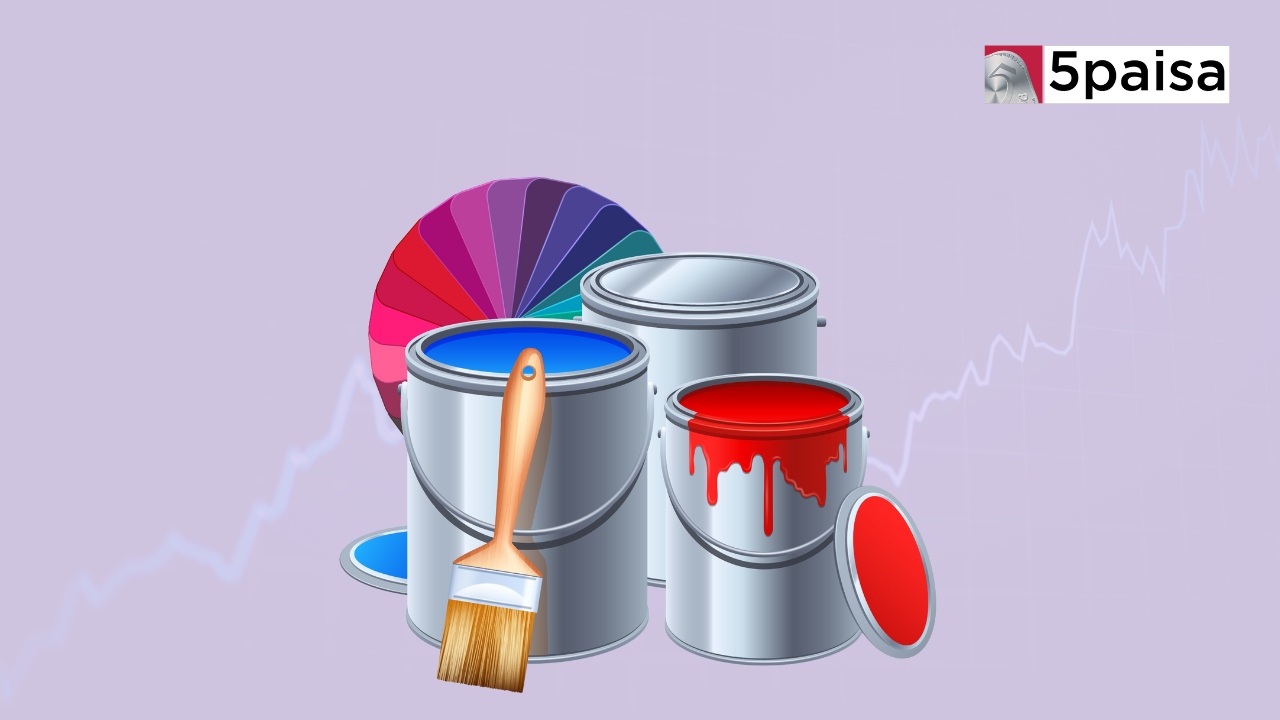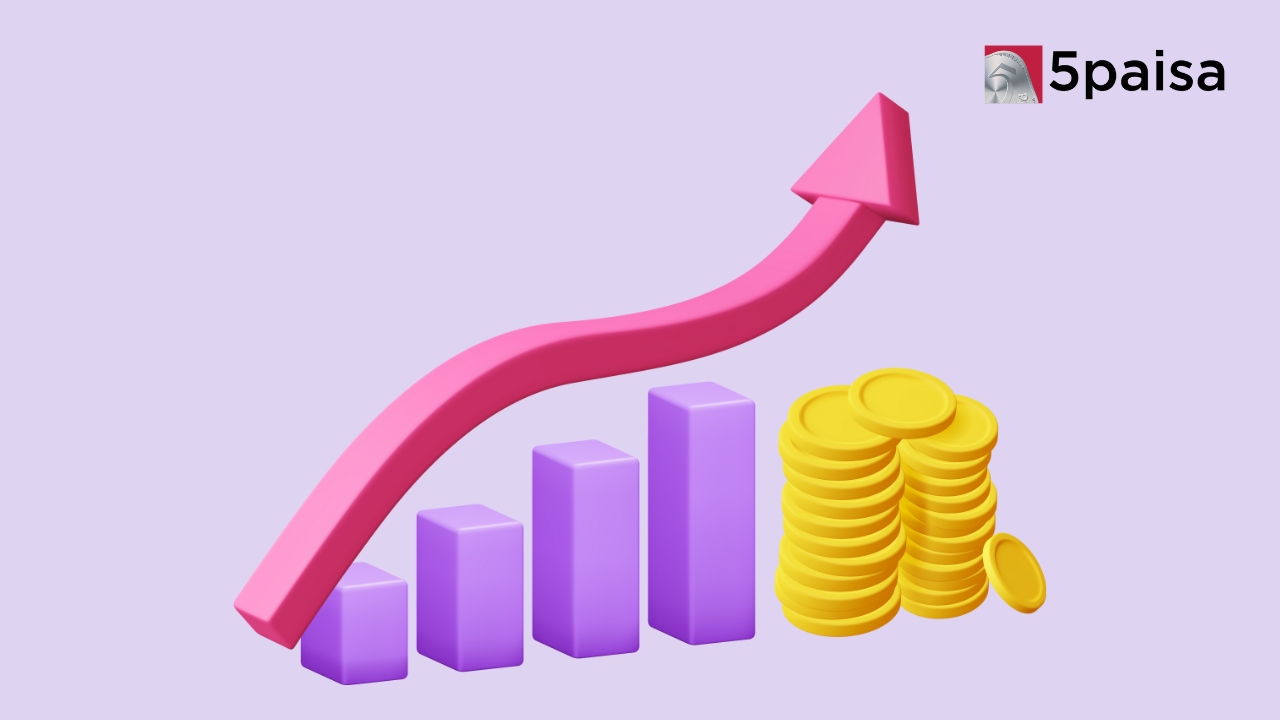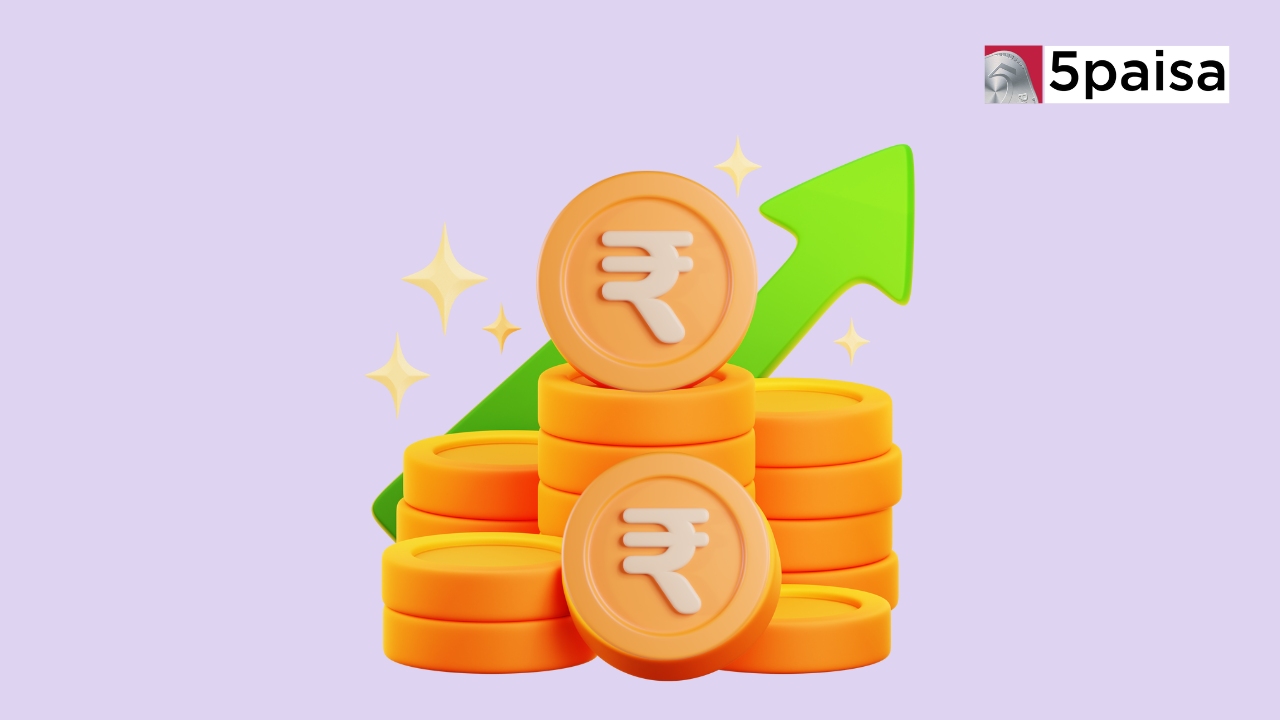Best Paint Stocks in India

Last Updated: 19th September 2024 - 03:47 pm
The paint industry offers value to different industries & serves multiple functions, contrary to the common misconception that paints are only used for aesthetic purposes. It is utilized in several industries, such as packing, transportation, automotive, woodworking, & architecture. The vibrant solutions are used to improve the surfaces' overall look, stop damage, & resist corrosion.
When considering top paint stocks to invest in India, it's crucial to evaluate factors such as market performance, growth potential, and financial stability. In 2024, the Indian paint & coatings industry is projected to grow by 10-12%. The competitive landscape, falling raw material prices, & an increasingly robust industrial environment are the main drivers of this expansion.
What are paints Stocks?
Paint stocks refer to shares of companies involved in the production & sale of paints, coatings, & related products. Major players in this sector include Sherwin-Williams, PPG Industries, & Asian Paints. These companies manufacture a wide range of products, from architectural paints to industrial coatings. Investing in paint stocks can be influenced by factors such as housing market trends, industrial activity, & raw material costs. They are often considered a part of the broader construction & materials sector.
Best 5 Paint Stocks in India 2024
Here are the Best Paint stocks to buy in India in 2024:
| Stock Name | Market Cap | CMP | 52W H/L in ₹ |
| Asian Paints Ltd | 3,14,674 | 3,281 | 3,423 / 2,670 |
| Indigo Paints Ltd | 7,087 | 1,488 | 1,591 / 1,250 |
| Kansai Nerolac Paints Ltd | 24,870 | 308 | 357 / 252 |
| Berger Paints India Ltd | 72,746 | 624 | 680 / 439 |
| Akzo Nobel India Ltd | 17,021 | 3,738 | 3,971 / 2,265 |
As of 18 Sep 2024
Overview of the Best Paint Stocks in India
Investors seeking the best paint stock in India should focus on companies with strong returns on equity and consistent revenue growth. For those interested in expanding their portfolio globally, exploring the best paint stocks in Asia can also offer lucrative opportunities. Whether you're looking for the top paint stock in India or the best paint stock to invest in Asia, these companies remain competitive in their respective markets.
1 - Asian Paints
| Financial Key Ratios | FY'24 |
| Compounded Sales Growth 3Yr (%) | 18 |
| ROCE (%) | 37.5 |
| ROE | 31.4 |
| Dividend Yield (%) | 1.02 |
| EV/EBITDA | 39.9 |
| MCAP/Sales | 9 |
| Price/Book | 16.9 |
As of 18 Sep 2024
Steady Decorative Volume Growth: Notable decorative volume growth of 10% has been observed, with both rural & urban markets exhibiting synchronized expansion. This growth trend underlines a balanced demand from diverse market segments.
Robust Industrial Paints Segment: The industrial paints segment is positioned strongly, supported by favourable conditions in both automobile & non-auto industrial domains. This resilience is attributed to softened raw material prices & sustained demand in key sectors. Challenges in International Business Division (IBD): The outlook for the IBD is mixed, primarily due to currency issues impacting certain Asian markets, such as Nepal. This uncertainty has led to varied performance within this segment, highlighting the importance of currency stability.
2 - Berger Paints
| Financial Key Ratios | FY'24 |
| Compounded Sales Growth 3Yr (%) | 18 |
| ROCE (%) | 27.5 |
| ROE | 23.5 |
| Dividend Yield (%) | 0.56 |
| EV/EBITDA | 36.8 |
| MCAP/Sales | 6.4 |
| Price/Book | 13.4 |
As of 18 Sep 2024
Berger Paints (BRGR) reported consolidated revenue growth of 20% YoY, primarily propelled by an impressive 11% volume growth in the decorative segment.
BRGR gained market share in the decorative paints segment during the first half of FY22, exhibiting a growth from 18% in FY22 to 18.8% in H1FY23.
The company aggressively expanded its network by adding 6,233 distributors & retailers.
| Financial Key Ratios | FY'24 |
| Compounded Sales Growth 3Yr (%) | 15 |
| ROCE (%) | 16.6 |
| ROE | 12.8 |
| Dividend Yield (%) | 0.81 |
| EV/EBITDA | 22 |
| MCAP/Sales | 3.2 |
| Price/Book | 4.5 |
As of 18 Sep 2024
KNPL reported a robust standalone revenue growth of 13.6% YoY in Q4FY23, reaching INR 16.1 billion.
KNPL's industrial segment remains a key driver of its performance, with particular strength in the automotive sector.
KNPL's decorative market share is estimated to be at 9-10%, although it has witnessed a decline in share over the past three years.
4 - Indigo Paints
| Financial Key Ratios | FY'24 |
| Compounded Sales Growth 3Yr (%) | 20 |
| ROCE (%) | 23.2 |
| ROE | 17.5 |
| Dividend Yield (%) | 0.23 |
| EV/EBITDA | 29.1 |
| MCAP/Sales | 5.6 |
| Price/Book | 7.8 |
As of 18 Sep 2024
Apple Chemie, a subsidiary, experienced strong year-over-year growth in Q1 FY25, up almost 47%. Compared to last year, the percentage of top line that is attributed to freight costs has decreased. Spending on advertising & promotion dropped from 7.6% to 7.2% of revenue, intending to raise interaction on digital media.
5 - Akzo Nobel India
| Financial Key Ratios | FY'24 |
| Compounded Sales Growth 3Yr (%) | 18 |
| ROCE (%) | 42.3 |
| ROE | 32.3 |
| Dividend Yield (%) | 1.95 |
| EV/EBITDA | 24.5 |
| MCAP/Sales | 4.3 |
| Price/Book | 12.8 |
As of 18 Sep 2024
Putting a focus on keeping customers & growing their share of the wallet among current clients. Employing current state-of-the-art solutions to leverage growth in electric vehicle (EV) coatings. Continuous innovation pipeline emphasizing cutting-edge technology & sustainability. Dulux VT Eterna & Interpon A3000 (a single-layer powder coating for two-wheelers) are two recent product introductions.
Overview of Paint Industry in 2024 in India
Pain Industry in India, there are two primary segments of industrial & ornamental paints. About 75% of the market is made up of decorative paints, which come in a variety of forms such as wood finishes, enamels, exterior & interior wall paints, primers, & putties. The remaining 25% are made up of industrial paints, which include products for automotive, packaging, marine, protection, powder, & other general industrial uses.
The decorative paint market is the largest in India, with a valuation of over ₹500 billion. In 2024, the paint & coatings market in India is projected to be valued at approximately USD 9.56 billion. It is predicted to increase at a compound annual growth rate (CAGR) of 9.38% to reach USD 15.00 billion by 2029. It should be noted that this expansion is attributable to expanding construction activity, growing industry demand, & technical developments in paint compositions.
Advantages of Investing in Paints Stocks?
The paint industry is essential to consumer goods, infrastructure, & building; it is not simply about aesthetics. Here are some reasons it merits thought:
1. Million’s Dreams: As millions of people move into cities, the need for housing is rising. This directly translates into more paint being used in both home & business settings. Cities in tiers two & three are experiencing particularly strong growth, which is increasing demand.
2. More to Spend: As people's disposable incomes rise, so does their ability to spend on house improvements. It is anticipated that as customers' awareness of interior design & aesthetics grows, this trend will intensify.
3. The Government's Painting: Building projects are being fueled by programs like the Pradhan Mantri Awas Yojana (PMAY) & the Smart Cities Mission, which is increasing the need for paint & coatings. The government's promotion of environmentally friendly goods also creates a market for businesses developing sustainable solutions.
4. Cars on the Road, Paint in Demand: The automobile industry in India is expanding, particularly as more people choose electric cars. Original equipment manufacturers (OEMs) & the aftermarket have increased their need for automobile coatings as a direct result of this change.
5. Building the Nation, One Stroke at a Time: Major investments in airports, bridges, & other infrastructure projects are opening up a plethora of business opportunities for paint manufacturers, especially in the industrial coatings sector.
What are the risks associated with Investing in Paint Stocks?
Investing in Paint Stocks comes with several Risks:
1. Raw Material Costs: Paint companies rely heavily on raw materials like titanium dioxide & petrochemicals. Fluctuations in these costs can impact profit margins.
2. Economic Cycles: Demand for paint products is closely tied to the housing market & industrial activity. Economic downturns can reduce demand.
3. Regulatory Changes: Stricter environmental regulations can increase compliance costs & affect profitability.
4. Competition: The paint industry is competitive, with many players vying for market share. This can lead to price wars & reduced margins.
5. Currency Fluctuations: For companies operating globally, changes in exchange rates can impact earnings.
Conclusion
Best paint stocks in India, like Asian Paints Ltd, Berger Paints India Ltd, and Akzo Nobel India Ltd, have shown resilience in the market. These businesses, which range from well-known behemoths to up-and-coming competitors, have continuously raised the bar for excellence, creativity, & client pleasure. The leading paint firms in India have established a reputation for dependability & reliability thanks to their wide product lines, robust distribution networks, & unwavering commitment to excellence. All rights reserved. These top paint businesses will expand considerably to shape the future course of the Indian paint market, which is expected to continue to prosper.
- Flat ₹20 Brokerage
- Next-gen Trading
- Advance Charting
- Actionable Ideas
Trending on 5paisa
Indian Stock Market Related Articles
Disclaimer: Investment in securities market are subject to market risks, read all the related documents carefully before investing. For detailed disclaimer please Click here.
 5paisa Research Team
5paisa Research Team
 Sachin Gupta
Sachin Gupta




